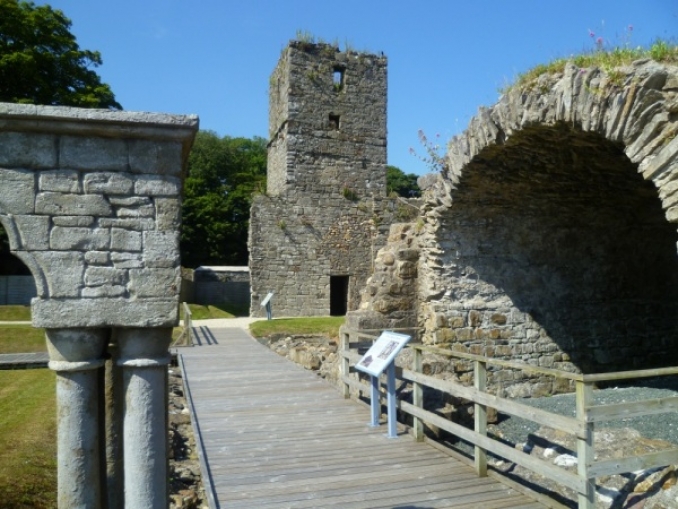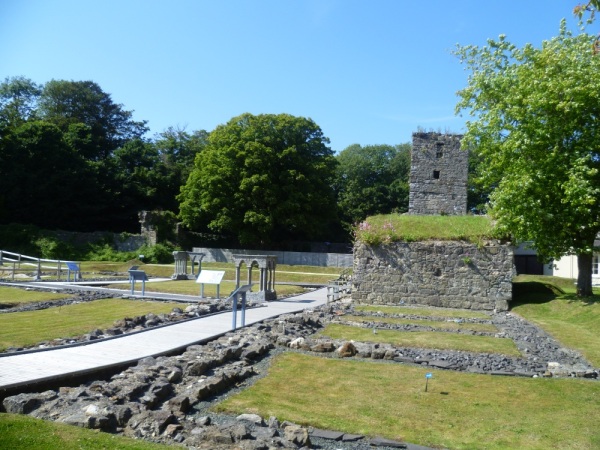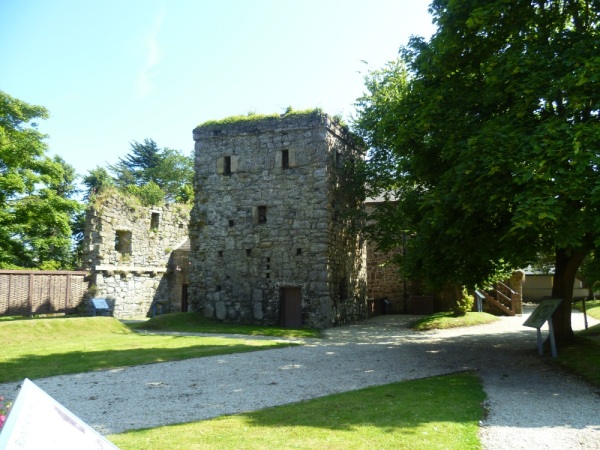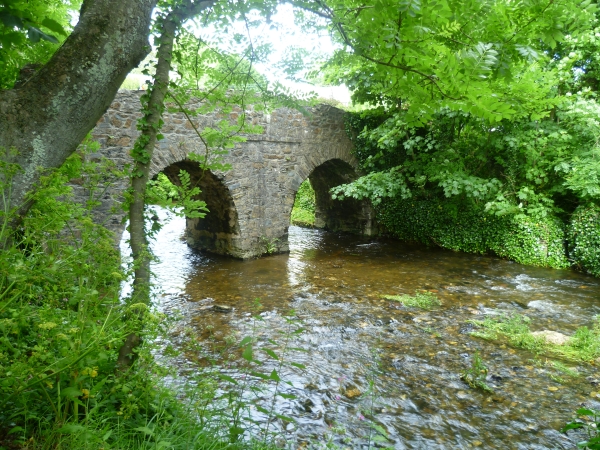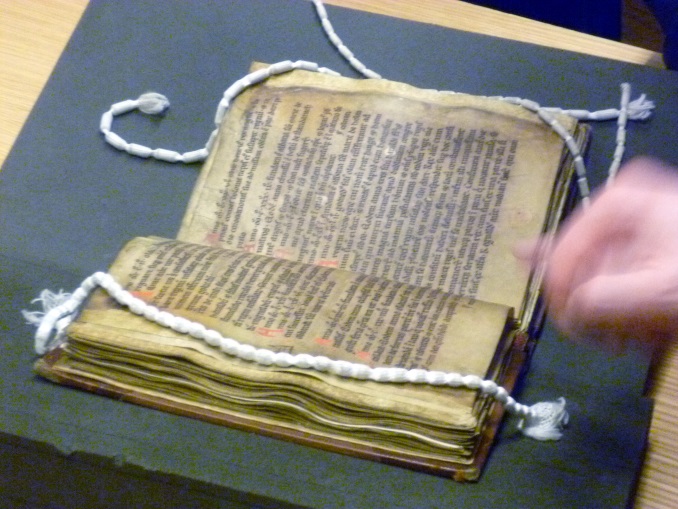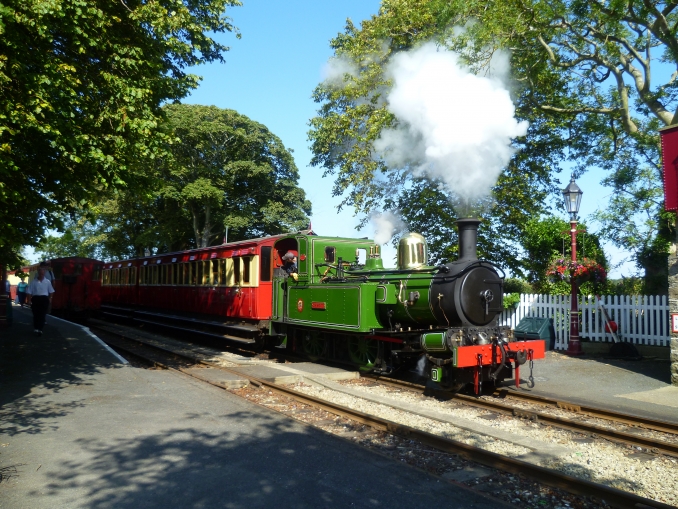Rushen Abbey was an important centre of knowledge and literacy on the Isle of Man
There has been increased interest in the Isle of Man (Manx: Mannin) recently about Rushen Abbey. Rushen Abbey was founded in 1134 by Monks of the Sauvignac Order on land granted to them by Óláfr Guðrøðarson (died 29 June 1153) who was a twelfth-century King of the Isles. The Kingdom of the Isles, also known as the Kingdom of Mann and the Isles, comprised the Hebrides, the islands of the Firth of Clyde and the Isle of Man from the 9th to the 13th centuries AD. The location of the Abbey was selected due to its close proximity to Castle Rushen, (Manx: Cashtal Rosien) a medieval castle and stronghold of the Kings of Mann and the Isles, located in the Island's historic capital, Castletown (Manx: Balley Chashtal). The ancient ruins of Rushen Abbey are in the village of Ballasalla (Manx: Balley Sallagh) named from Gaelic 'Place of the Willow Tree' and the village is largely built from the remains of the Abbey. Rushen Abbey is now in the very capable hands of Manx National Heritage (Manx: Eiraght Ashoonagh Vannin), which is the national heritage organisation for the Isle of Man.
This increased level of interest about Rushen Abbey has arisen from a renewed campaign for the return of the Chronicles of the Kings of Mann and the Isles to the Island. The manuscript is currently being 'held' (for want of a better word), in English hands at the British Library in London. The Chronicles were compiled at Rushen Abbey, as indeed were many other important documents relating to the Island. The Abbey is significant in this respect, as it was a centre of knowledge and literacy on the Island. The Chronicles, written in Latin in 1261 or 1262, are a look back, year-by-year from 1016, over the significant events in Manx history of that time. It records the island's role as the centre of the Norse Kingdom of Mann and the Isles, and the influence of its kings and religious leaders, as well as the role of Rushen Abbey itself.
The campaign for the return of the Chronicles is a long standing one, but received renewed impetus after a speech made at the Illiam Dhone commemoration held on 2nd January 2019. Illiam Dhone (14 April 1608 - 02 January 1663) also known as William Christian was a Manx politician and patriot. For his part in the Manx rising of 1651 he was executed by firing squad at Hango Hill in the Isle of Man on 2nd January 1663. Every year on 2nd January there is a commemoration held at Hango Hill, which is an ancient place of execution. The speech relating to the Chronicles was made by Bill Henderson, a member of The Legislative Council (Manx: Yn Choonceil Slattyssagh), which is the upper chamber of Tynwald, the legislature of the Isle of Man. Bill Henderson called forcefully in his speech for the return to the Isle of Man of the Chronicles of the Kings of Mann and the Isles. The Chronicles, of course, are not the only treasures and artefacts from the Celtic lands that remain in collections in England and should be returned to their respective homelands.
The campaign for the return of the Chronicles continues. However, this campaign has also reminded many people of the major significance of Rushen Abbey as a past centre of knowledge and literacy on the Isle of Man. The abbey is preserved by Manx National Heritage and has a building containing artefacts which tells the history of Rushen Abbey and the surrounding area. The remains of the original abbey have had some restoration undertaken and walkways allow visitors to get a close view of the site. The abbey is open between April and October and there is an admission fee. Prior to accessing the abbey gardens, visitors walk through a museum that explains the role of the abbey. There is interactive, audio and video material available. Nearby is a surviving packhorse bridge, built in around 1350 to allow the monks to cross the nearby Silverburn River (Manx: Awin Rosien). Known today as The Monks' Bridge (or The Crossag), it is one of very few such surviving packhorse bridges. Below are some images including Rushen Abbey and the bridge. If you are minded to visit, there are few better ways to get there than by travelling to Ballasalla by the steam train, which runs between the towns of Douglas (Manx: Doolish) and Port Erin (Manx: Purt Çhiarn). The walk to the Abbey from the station takes about ten minutes.
